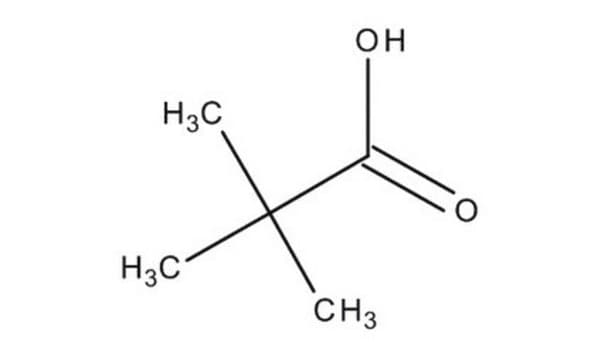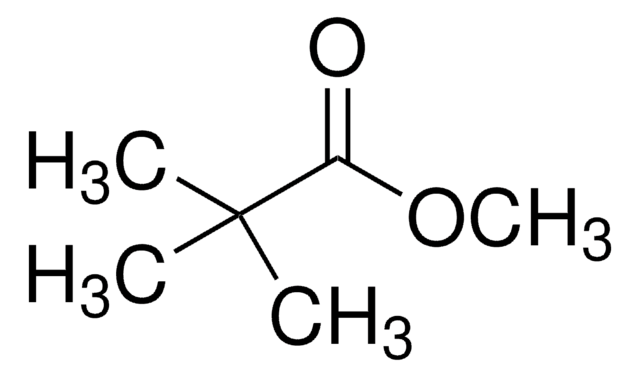T71803
Pivalic acid
99%
Synonym(s):
2,2-Dimethylpropionic acid, Trimethylacetic acid
About This Item
Recommended Products
vapor density
3.6 (vs air)
vapor pressure
9.75 mmHg ( 60 °C)
Assay
99%
reaction suitability
reaction type: C-H Activation
bp
163-164 °C (lit.)
mp
32-35 °C (lit.)
density
0.889 g/mL at 25 °C (lit.)
functional group
carboxylic acid
SMILES string
OC(C(C)(C)C)=O
InChI
1S/C5H10O2/c1-5(2,3)4(6)7/h1-3H3,(H,6,7)
InChI key
IUGYQRQAERSCNH-UHFFFAOYSA-N
Looking for similar products? Visit Product Comparison Guide
Related Categories
General description
Application
- As a co-catalyst with palladium for the arylation of unactivated arenes and N-heterocycles.
- As an additive to facilitate the carbonylative suzuki reactions to synthesize biaryl ketones from aryl iodides and arylboronic acids by using palladium nanoparticles as catalyst.
- In the cyclization reaction of benzamides with alkynes to synthesize isoquinolones in the presence of 8-aminoquinoline ligand and cobalt catalyst.
Caution
related product
Signal Word
Warning
Hazard Statements
Precautionary Statements
Hazard Classifications
Acute Tox. 4 Oral - Eye Irrit. 2 - Skin Irrit. 2
Storage Class Code
11 - Combustible Solids
WGK
WGK 1
Flash Point(F)
147.2 °F - closed cup
Flash Point(C)
64 °C - closed cup
Personal Protective Equipment
Certificates of Analysis (COA)
Search for Certificates of Analysis (COA) by entering the products Lot/Batch Number. Lot and Batch Numbers can be found on a product’s label following the words ‘Lot’ or ‘Batch’.
Already Own This Product?
Find documentation for the products that you have recently purchased in the Document Library.
Customers Also Viewed
Our team of scientists has experience in all areas of research including Life Science, Material Science, Chemical Synthesis, Chromatography, Analytical and many others.
Contact Technical Service










